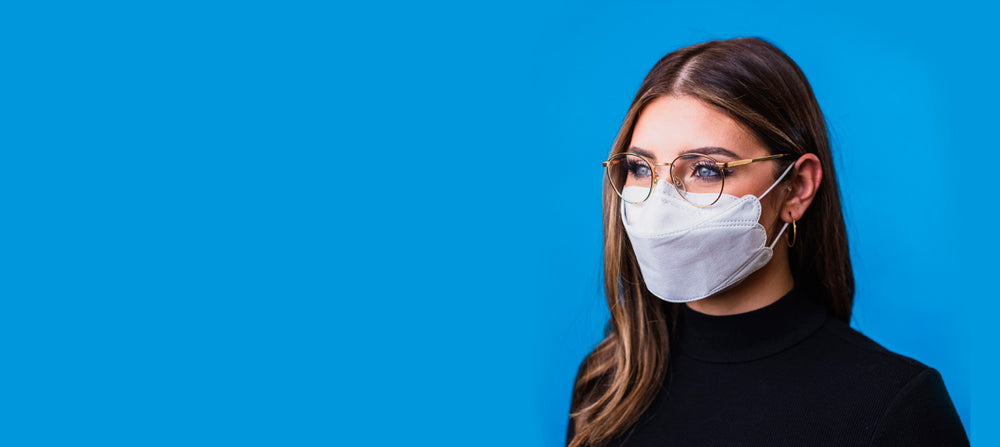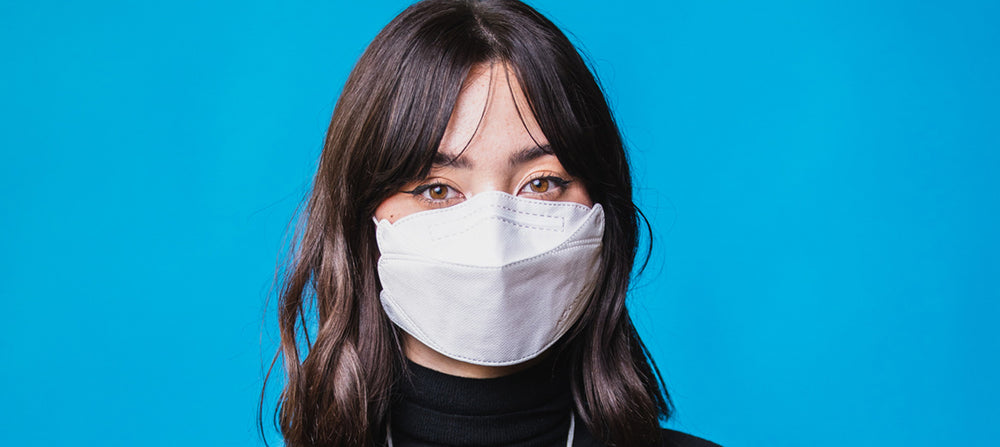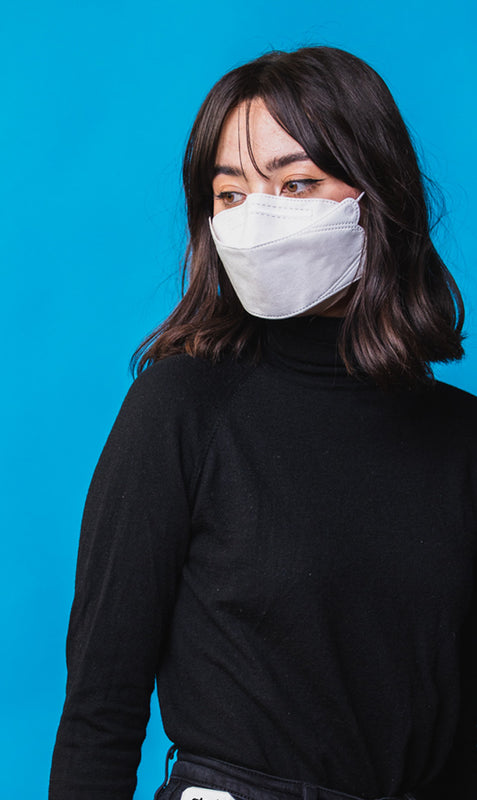When the world first learned of the global coronavirus pandemic, there was no doubt about the use of masks and face shields to offer protection against the spread of the associated disease, COVID-19. Experts and government officials across more than 95% of the world’s countries agreed that the act of covering the mouth and nose would help to stop the spread of the virus. Now, officials at the Public Health Agency of Canada say more attention may need to be paid to the types of face coverings used if we really want to continue to control the rise in infections...
RESEARCH INTO THE SPREAD OF THE CORONAVIRUS IS EVOLVING

As more information is gathered about the coronavirus and the COVID-19 disease that it causes, we begin to understand a lot more about how it is spread. One of the reasons that it is such a highly contagious disease, is that it is a respiratory virus and is spread through airborne particles particularly when an infected person coughs, sneezes, or speaks loudly, and virus-containing particles are released into the air.
Because the organisms infecting these particles are so minute, they are able to remain suspended in the air for a long time before they would naturally fall to the ground with the force of gravity. It increases the risk of an uninfected or at-risk person, breathing them in and becoming then infected.
For this reason, face masks and shields are said to offer the best level of protection against infection from these suspended airborne particles.
Along with the evolution of the information about the coronaviruses themselves, comes the need to evolve the guidelines as to how best to limit the spread. The latest look into these guidelines and how to adjust them focuses on the masks we’ve been told to wear, themselves.
While mask manufacturers have really tapped into an individual’s personality, making available a type of mask to suit any occasion, it’s not what the mask looks like on the outside that matters most; it’s what’s on the inside that really counts.
Since the beginning of the pandemic, health officials agreed that masks should have at least two layers of protection; a cloth layer and an internal filtration layer. Now, updated recommendations suggest that three layers, including a filter should be worn.
Recently, Canada's Chief Public Health Officer Dr. Theresa Tam said that there are a few important things to take into account when looking at the protective factors surrounding mask-wearing. She says that a mask should:
• Fit securely around your nose and mouth, completely covering both
• Be made of at least three layers: two tightly woven fabric (cotton or linen) layers and one filter layer, made from a material such as non-woven polypropylene fabric
• Preferentially have an additional layer, such as a disposable filter that may be discarded on a regular basis
Of course, there is no reason to dispose of your current two-layer masks! The new guidelines simply suggest that we add an additional layer of protection, particularly in the form of a filter layer, as it may provide a higher degree of protection that we need to stop the spread of the coronavirus.
When you’re out looking for new masks, be sure to try to find ones that are within these new guidelines and the suggestions on more protective layers.
POINT.1 NANO MASK OFFERS ONE OF THE HIGHEST LEVELS OF PROTECTION
The filtration effect of the mask is one of the most important aspects to consider when selecting the level of protection.
Research conducted into the Point.1 Nano mask shows just how much more effective it is at filtering out particles, even those that would be considered small enough to pass through many other trusted filtration devices. When compared to one of the most commonly used protective masks in the medical industry in the USA, namely the N95 mask, the Point.1 Nano mask has shown to have a 97% effective filtration effect against nanoparticles versus the tested 95% filtration rate of the N95.

When compared to typical cloth masks, which have historically been used even in healthcare settings since the early 1900s, research has also proved that those using multi-layer, water resistant fabrics made up of tight weaves are far superior and offer far greater protection against the spread of respiratory disease.
One 2015 study showed that the rates of infection in those participants wearing a cloth mask were consistently higher than in those wearing a multi-layer filtered medical mask. Another study in the same year, this time published in the BMJ, had healthcare workers wear either a cloth or medical mask consistently over a period of 4 weeks during their shift. The cloth masks proved to have a penetration rate of viral particles of almost 97%, while the medical mask only 44%.
Of course, there’s also the reduction of transmission of respiratory viruses in those who are already infected and the wearing of a mask to protect others from the disease, even if the person is asymptomatic. A study published in the journal Scientific Reports in 2020 proved that the emission rate of viral particles were reduced by a whopping 90% and 74% by surgical masks and non-vented KN95 respirators during coughing episodes. The same experiments on the ability of homemade cloth masks to offer this level of protection was questionable and researchers suggested that homemade masks may even be a source of infected aerosols due to the higher rate of fibers being released into the air from these types of masks during coughing or loud talking.
Now, cloth masks are not totally useless! In one article published by the Centers for Disease Control and Prevention, researchers report that while cloth masks have been shown to be effective in the prevention of community spread of infectious diseases, it really is about the correct use of the mask - for example, washing/changing it regularly - and the right fit that offers the most protection.
There is no question as to whether cloth masks work... But we need to ask: how well, and to what degree are they actually protecting us?
There’s also the inward leakage of moisture to consider when selecting a mask. A study conducted in Korea, where the most widely used mask is the KF94, experiments comparing the K94 and the Point.1 Nano show that the Point.1 Nano has a risk of 2.5% inward leakage while the KF94 may have up to 8% inward leakage.

This information shows significant and strong evidence for the use of the Point.1 Nano mask for increased protection against even the small viral particles associated with the COVID-19 infection.
When choosing the right level of protection against airborne and respiratory illnesses, a multi-layer, filtration mask simply seems to be the best option.
PROTECTION FROM MORE THAN JUST THE CURRENT PANDEMIC
Additionally, these high filtration, multi-layer masks offer great benefit and protection against a number of other airborne illnesses and pathogens and not just the current pandemic we’re dealing with right now.
With these masks on hand, you’re protected against other contagious respiratory diseases such as the common cold and Flu, but you’re also protected from dust and other pollution, no matter where you are.
They’re perfect for use as you go about your day-to-day activities, are well-suited for your daily commute, shopping excursions and even offer protection when you’re unable to avoid crowded places or attending a conference, wedding or event in a large venue!

While fashionable masks may look good on the outside, it’s really about the design or fit of the mask and the materials and layers that it is made out of that is really the most important. Seeking the desired level of protection against virus-infected airborne droplets is even more essential as the weather turns colder; more people will be indoors in areas of poor ventilation, and so we need to comply with the new guidelines and choose the type of face coverings that will keep even those minute particles out and our families and communities safe.


